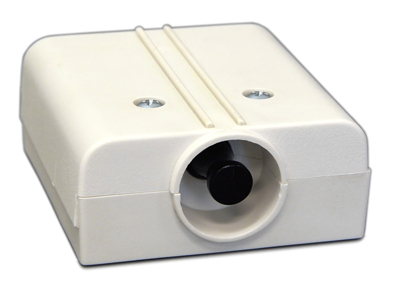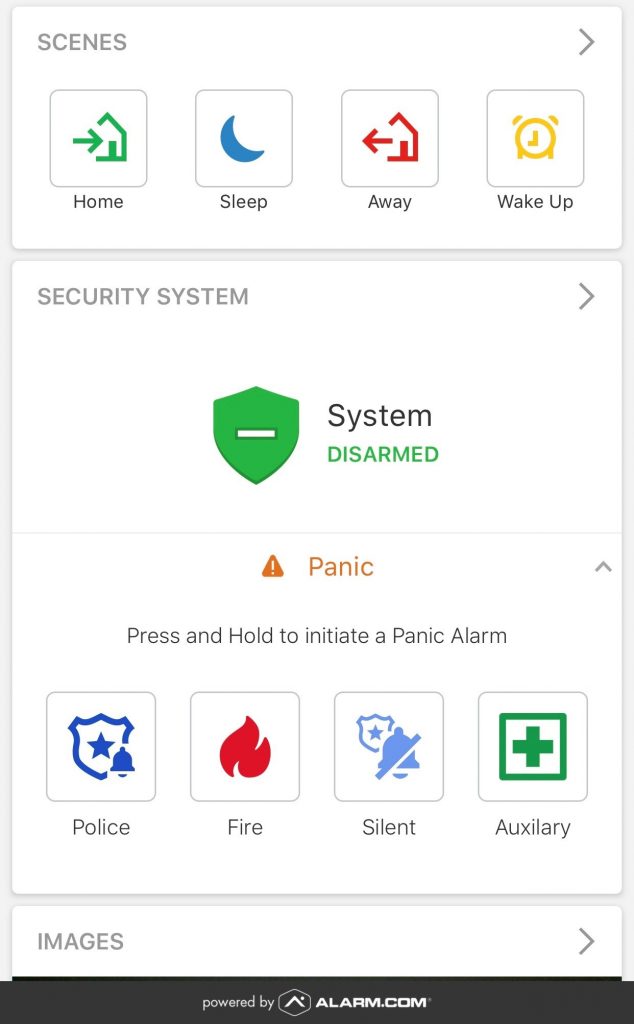Most potential alarm customers call us up with some prior knowledge of security system “basics.” These include door and window sensors to secure their home’s perimeter. Generally, we also install motion detectors to cover large interior areas of a home as well. Finally, many people ask us about installing monitored smoke detectors. These detectors provide life safety. Furthermore, they often come with a convenient discount on homeowners’ insurance. However, many customers do not know that we offer life safety far beyond smoke detection. In this post, we share some additional life safety ideas for your security system.
We will begin with a couple detectors in the same “family” as smoke detectors. From there, we will look at ideas for personal panic security. The ability to call for help from anywhere on the property adds a tremendous amount of security. Finally, we will even look at how you can use your phone as an alarm-connected panic device! Now, let’s get started with a look at adding carbon monoxide detection to your alarm.
Carbon Monoxide Detectors
In one of our earliest blog posts, we examined Residential Smoke Alarm Requirements in Massachusetts. That post includes a guide for ensuring that your home meets minimum legal fire detection requirements. We also explained that in 2006, Massachusetts began requiring Carbon Monoxide alarms in all homes. Moreover, the requirement calls for CO alarms on every level of the house, as well as within close proximity of all sleeping areas. Since CO often proves fatal to residents in their sleep, this regulation makes perfect sense.

Installing heat detectors makes a great alternative to adding smoke detectors in areas of the home that see plenty of steam or smoke.
We offer monitored CO detection for alarm systems. These detectors create a siren response, just like non-monitored CO alarms would. However, activation of these detectors also produces a central station response. This adds tremendous security. For example, you may sleep through the siren response caused by dangerous CO levels. Adding this monitored detection will send a fire truck to check on the situation and potentially save your life or the life of a family member. Next, let’s look as another device that offers similar security!
Heat Detectors
Smoke detectors serve as the primary fire-detection device in most alarms designed to provide fire security. However, we cannot install smoke detectors in all applications. For example, smoke detectors installed near kitchens or bathrooms often activate due to the smoke and steam associated with these rooms. In this case, heat detectors prove ideal. Furthermore, houses built in 2008 require a heat alarm or monitored heat detector in any garage attached to the house.
Therefore, consider adding heat detectors if you have smoke detectors that create false alarms due to being installed in areas where smoke and steam are naturally created. At this point, you have a pretty good idea of all the ways we add fire and CO-related security to alarm systems. Next, let’s look at a life safety idea that puts help at your fingertips at all times!
Emergency Panic Response
We find that our offering of panic devices surprises many of our customers. After all, most people assume that their alarm system will not call for help when it is disarmed. However, panic buttons allow you to call for help at any time. Furthermore, we can even provide program these devices to provide a specific response based on our customers’ preferences. In this section, we’ll look at some panic button options for your alarm. We’ll begin with a focus on hold-up and burglary-related panic buttons. Then, we will look at devices that call for an ambulance. Finally, we will wrap the section up by looking at using your smartphone as a panic device. Let’s get started!

Panic buttons, such as this model by United Security Products, allow users to call for help without sounding an alarm’s siren if a silent response would create more security.
Hold-Up and Burglary Panic Buttons
Most customers who install panic buttons do so in case of a hold-up (especially in a commercial location) or a burglary. Generally, we install hold-up panic devices underneath counters in retail spaces. These buttons send a silent signal to the central station alerting them to a dire emergency. At that point, our central station dispatches the police immediately.
Furthermore, we can also program these devices to create a blaring siren response if that better fits our customers’ preference. We often install these buttons in homes so that homeowners who hear something suspicious can create a siren and police response even if their alarm system is disarmed. Moreover, we can also provide customers with mobile burglary panic buttons. These devices allow residents of a home or employees in a business to carry panic security with them at all times while onsite. Now, let’s look at another panic device that provides unique life safety!
Devices to Call for Medical Help
You may recall our post sharing 6 Security Measures That Improve Senior Citizen Safety in the Home. In that post, we discussed the importance of adding medical panic devices to your alarm. These buttons do not cause a siren to sound upon activation, but rather they call our central station to create an ambulance dispatch. Sometimes, we install these life safety devices on walls in high-risk areas of the home. For example, stairways and bathrooms account for a large percentage of falls for elderly residents of homes. Therefore, these areas make good places for these fixed medical panic buttons.
Additionally, we often provide customers with mobile panic buttons. These panic devices usually take the form of a pendant or bracelet with a button in the middle. Upon activation, they provide the same central station and ambulance response as a fixed medical panic device. For customers worried about elderly family members or loved ones still living at home, medical life safety devices prove invaluable. Now, let’s look at a unique panic response option that we’ve started offering over the last few years!

Alarm.com users can activate a number of both audible and silent panic alarms from their cell phones.
Phone-Based Panic Response
You may remember our post explaining How to Use Your Smart Phone to Add Security to Your Alarm. In that post, we explained how interactive cellular monitoring adds new layers of security to your alarm. Adding these features involves installing our cellular dialer, powered by Alarm.com. Once installed, this dialer monitors your alarm system through a cellular network. This contrasts with “traditional” alarm monitoring, which uses a landline for monitoring. Cellular monitoring provides more reliability, because it allows your system to call for help even when your phone lines go down!
Furthermore, our cellular dialer gives you the ability to use the Alarm.com app to control our alarm remotely with your smartphone and receive text alerts based on alarm events. These include burglar alarm activations, low sensor batteries, system armings and disarmings, and more! Finally (and most relevant for this post) the Alarm.com app provides you with all of the pictured panic button options. This puts emergency response for police, medical, and fire-related events at your fingertips at all times. You can even create a silent alarm for police dispatch if desired! This dynamic security feature makes Alarm.com an extremely popular security weapon.
Adding Life Safety to Your Home Security System
We hope that this post has given you ideas for adding life safety to your security system. Furthermore, we encourage you to contact us with any questions you may have about this material. We would love to talk you through both our security and life safety product offerings. Additionally, we offer free site surveys to both new and existing customers alike. Perhaps you have a security system and want to expand the security that it has to offer. Or maybe you want to design an alarm from the ground up and include some of these ideas from the get-go. Either way, we can work with you to create a complete security plan that keeps you and anyone that you live or work with as safe and secure as possible!
Feature Photo Credit: torbakhopper on flickr. Used under the CC BY-ND 2.0 License.
